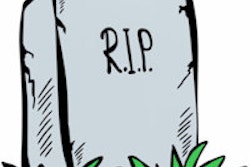
Both RSNA and the Healthcare Information and Management Systems Society (HIMSS) have great shows. RSNA is 90% medical imaging and 10% other; HIMSS is 90% clinical IT and maybe 10% other (including imaging).
While there were at best 100 dedicated imaging or imaging-related booths at HIMSS 2015, every vendor seemed to have some claim or connection to imaging. It may have been some Beverly Hillbilly distant cousin on your mother's side twice removed, but I am sure we are related ...
The numbers at HIMSS are staggering. Registration was more than 43,000, up almost 17% from last year, compared with only a 4% increase at RSNA 2014. Most importantly, almost 31% of HIMSS attendees were from the C-suite, and another 18% were senior management. This translates to almost one out of every two people attending HIMSS being a decision-maker.
 PACS consultant Michael J. Cannavo.
PACS consultant Michael J. Cannavo.You may ask, if only 5% of HIMSS was imaging-related, why would an imaging vendor exhibit here? It's not a PACS show by any means, and indeed it is far from it.
The answer is simple: exposure. PACS get evaluated for replacement every six to eight years (up from every five years in the past), and many times C-suite executives have little or no idea about the incumbent PACS vendors.
HIMSS provides vendors with a perfect opportunity to show their wares and lay out their long-term road map relative to integration into the electronic health record (EHR) and how their system will help generate revenue from meaningful use (MU).
There are also always a few folks looking at PACS replacements as well, just like at RSNA, and HIMSS gives them the one-stop shopping excursion they require while getting buy-in from those who control the purse strings. This is especially crucial given that some facilities are on their third, fourth, or even fifth generation of PACS.
Nearly all of the major and most of the independent PACS vendors who displayed at RSNA (except teleradiology service providers) also displayed at HIMSS. Messaging from the vendors focused primarily on enterprise solutions, along with both analytics and interoperability. In fact, if you added big data firms into the mix, you would identify nearly three-quarters of the total number of vendors at the show.
There were no earth-shattering products introduced at HIMSS 2015, even though the PR machines at some companies might have you believe otherwise. In fact, the phrase that came to mind the most when seeing how products were being repositioned was "lipstick on a pig." Though I'm sure many would take exception to that analysis.
The challenge throughout the show was dealing with definitions -- how each vendor defines interoperability, for example -- or what type of analytics are done and the degree of interpretation provided through the analytics, as well as what really constitutes a vendor-neutral archive (VNA), and other questions of a similar ilk.
The biggest challenge I had was looking at the Big Three vendors in the EHR market and wondering how they could call themselves EHR providers. Here is one of the best definitions I have read of an EHR:
Electronic health records are built to go beyond standard clinical data collected in a provider's office and are inclusive of a broader view of a patient's care. EHRs contain information from all the clinicians involved in a patient's care and all authorized clinicians involved in a patient's care can access the information to provide care to that patient. ...
Why, then, do none of these three vendors -- which control close to 80% of the total imaging market -- offer full radiology and cardiology imaging systems as part of their EHR? In fact, nearly every vendor in the EHR market seems to take a hands-off approach to clinical imaging, offering either links to PACS reports only or links to the VNA that holds the radiology and cardiology data.
These vendors love to use the word "interoperability," yet how they "interoperate" varies greatly. As we head into stage 3 meaningful use, where the patient health record plays a much more important role, PACS vendors may require an infrastructure that is a lot more robust to handle these additional requests for information. Are we ready for that? Not that I have seen so far.
What's equally interesting, though, (and sad) is that if a PACS vendor tries to cite interoperability to an electronic medical record (EMR) to create an EHR, they get blasted out of the water. "Blasphemy -- you are an imaging player, not an EHR vendor," the argument goes.
Huh? How are they not the same? If anything, clinical images and imaging systems are a lot more complex than the EHR systems they connect to. Just like last year at HIMSS, though, getting to see that connectivity, let alone discuss it, was another story. Also like last year, most of what I was shown could marginally pass for an enterprise image viewer that allowed the display of PACS images along with a report but little more.
Beam me up?
I felt like I was at a Star Trek convention rather than HIMSS, as most of the messaging related to PACS centered on the enterprise, concerning how PACS connects to the other global clinical imaging systems, including the EHR.
VNA providers brought forth nearly the same exact Statue of Liberty enterprise story they had in the past: "Give me your tired, your poor, your huddled masses yearning to breathe free. ... I lift my lamp beside the golden door!" -- implying they can do it all.
VNAs have, indeed, become the "New Colossus," seemingly taking in every image of every type through a singular database and outputting that same data as magically as the images appeared -- or so some vendors would have you believe. Some VNA software can actually do this, but far more cannot.
The amount of discussion spent on disaster recovery relative to the VNA was also highly limited. This surprised me, as it's not a question of if the VNA (or any of its components, like the database) will fail, but rather when.
The interest in VNAs at HIMSS 2015 was significantly higher than in years past, which is good to see. Many C-suite executives are looking at the bigger picture, although a lot of this is being driven by EHR vendors that see connectivity through a VNA as the primary -- and, as of now, only -- means of providing imaging information to both clinicians and patients. Whether this will fly remains to be seen, but it does make for a good story.
It was also interesting to see the difference in messaging between the independent VNA vendors and the imaging vendors who offer VNA solutions as an integrated part of their product lines (and as a standalone solution, although, honestly, those who were successful in getting more than 10% of their VNAs adopted beyond their own systems were few and far between).
The independents tout vendor independence and the ability to integrate all data types (documents and images) into the VNA, although in practice this is something few have done successfully, especially relative to digital pathology, which is the next frontier.
PACS vendors tout a more seamless integration with their systems and lower overall costs. Both have advantages and benefits, but how they handle things such as information life-cycle management (ILM) and other areas needs to be closely evaluated. That said, messaging relative to not just VNAs but to all products still remains much too generic
I would love to have seen more involvement in the medical image sharing arena, and I did to a degree with some of the majors, yet the growth in this market segment still remains a bit slow. It's growing, but not nearly as fast as some company's press releases make it out to be.
There was a lot of talk about the cloud, but, again, the volume of what seemed to be misinformation beat out actual information by at least two to one, with security remaining the No. 1 concern, especially relative to data breaches.
Cloud proponents pooh-pooh the idea of the cloud being unsafe and the need for added security, stating accurately that the vast majority of breaches are due to human errors. Still, that didn't stop the plethora of companies offering a host of data security options, all designed to instill confidence, if nothing else -- and creating yet more confusion in an already confusing marketplace.
Value-based versus volume-based radiology was discussed by some at HIMSS, but most agree this is premature to plan for and only marginally required to be discussed at this stage in the game.
HIMSS remains a great show: long and tiring, for sure, yet one that brings together all the disparate clinical systems literally under one roof. Those whose job it is to plan for the future can see the tools that can get them there -- all in one location.
Both radiology and cardiology play a strong role and will continue to do so in the future as two of the leading areas of revenue generation. We are there -- we just need to convince others that we are important as well.
Now comes the fun part of my show review: the 2015 PACSman Awards, HIMSS edition.
The Godfather Award
To the aptly named hashtag group #HITchicks. I keep thinking back to the movie: "I know English. Monday, Tuesday, Thursday, Wednesday, Friday ..." Leave the gun, take the cannoli.
The Truth in Advertising Award
Goes to ...

The Shakespeare Award
This company made Much Ado About Nothing, with full-page ads stating, "We raised the bar again ... now we handle x-rays, too." I'm not sure what bar they have been at, but every VNA provider out there has been doing x-rays for at least the past decade -- now they are just catching up? I'm waiting for the brass band next.

"When we say you need to hit 100% of quota, we mean 100% of quota. Now get out there and sell, damn it!"

And what kind of dressing would you like on your bean sprouts, sir?
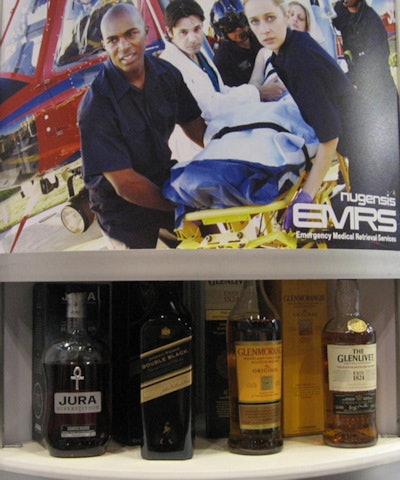
The Scots have the right idea.
The Star Trek Award
Goes to my hotel, which was fabulous in every way except having its Apple-based TV system down all morning. When I called at 5:45 a.m., I was told that others experienced the same problem, and engineering would be in at 8 a.m. to look into it. I thought of Captain Kirk calling down to engineering as the Klingons were attacking the Enterprise, saying, "Scotty, give me all you've got now!" and hearing "I'm sorry, sir, Scotty doesn't get in until 8."

Next on Maury: "Jason, you are not the father!"
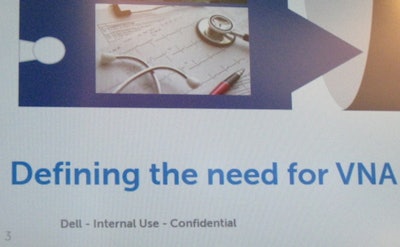
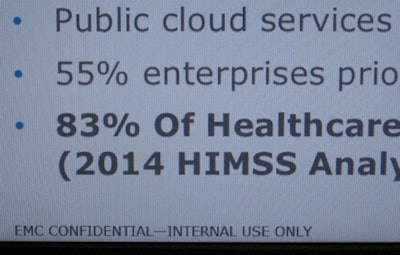
Let's just keep this between you, me, and 43,129 of our closest friends.
The Did We Miss Anyone? Award
To all the companies that prominently displayed their awards from a well-known award-issuing company -- or at least I think that's what they do, since everyone seems to have an award from them. Will those who haven't won an award please raise their hands? We'll make sure we get to you.

Even at HIMSS, you gotta protect your nuts.
The Conspicuous Absence Award
HIMSS and RSNA both have about the same percentage of international visitors, yet nowhere at McCormick Place did I see a single face mask being worn. Was there a "Geeks for MJ" reunion being held somewhere else in Chicago? There has to be a reason.

Someone cue Three Dog Night: "One is the loneliest number ..."

Hey, you scratch my back, I'll scratch yours.
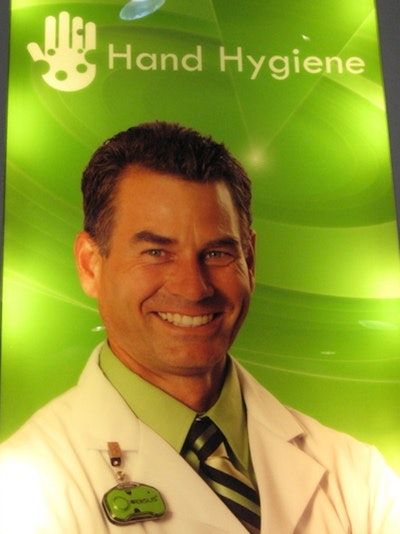
He looks way too happy, so I'm not even gonna go there.
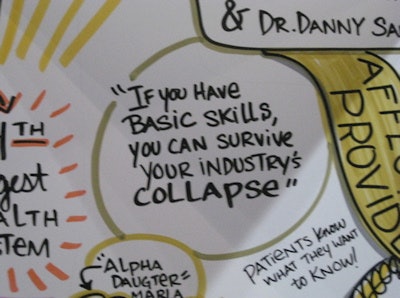
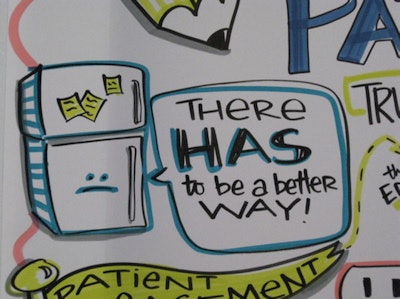
Never were truer words spoken.
The Carl Boberg Award
Have you noticed that nearly all of the marketing from the leading EHR provider references this very same company, ad nauseam? If you took away all the research and other objective "data"
And speaking of which ...

Um ... ah ... er ...

I like a company that is not afraid to show where its bull comes from.

It's always good to have all your ducks in a row.
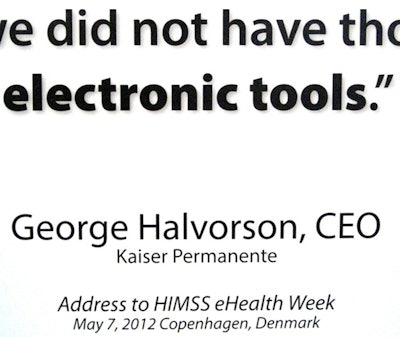
I guess when you are the market leader, you can use outdated quotes.

If I've told you once, I've told you 1,000 times: If patients can elope, then so can you, and then maybe we can buy the wander management system for your brother.

Will Smith said it best in the movie "Independence Day": "I gotta get me one of these!"

I am completely stumped as to why these were flying over a certain vendor's booth. A metamorphosis, perhaps? Butterflies Are Free? Butterfly McQueen? "I don't know nothin' 'bout birthin' babies!" Got me.

Marlin: He's my son, he was taken by these divers.
Dory: Oh my, you poor fish.
Chum: Humans. Think they own everything.
Anchor: Probably American.
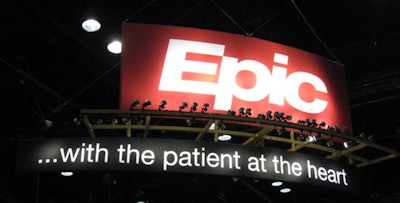
At the heart of what? Am I the one grammatically challenged here, or should this read, "With the patient at heart?" Or maybe they are referencing 1 Samuel 16:7: "People look at the outward appearance, but the Lord looks at the heart." Yeah, gotta be that.

Exodus 9:1: "Go in unto Pharaoh and tell him ... Let my people go. ..."

Phew. Thank goodness. I was afraid taxes weren't included in the deal here.

I saw a few vendors taking up a collection to add my name to the list. And to think I could have had a KLAS award instead.

I never did get the hang of this selfie thing -- am I supposed to look up?
Michael J. Cannavo is known industry-wide as the PACSman. After several decades as an independent PACS consultant, he spent two years working as a strategic accounts manager with a major PACS vendor. He has now made it back safely from the dark side and shares his observations in the Straight Talk From the PACSman series.
His healthcare consulting services for end users include PACS optimization services, system upgrade and proposal reviews, service contract reviews, and other areas. The PACSman is also working with imaging and IT vendors developing both global and trade show-specific marketing programs using market-focused messaging. He can be reached at [email protected] or by phone at 407-359-0191.
The comments and observations expressed herein are those of the author and do not necessarily reflect the opinions of AuntMinnie.com.







